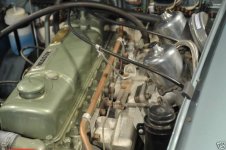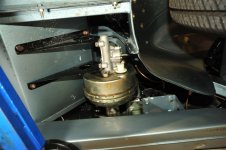Using plated, usually zinc, fasteners will help. I do notice that your intake manifold and heater tube are not painted. Both, I believe, should be engine color. If not painted, over time both will corrode, leaving an appearance you will not be happy with. You can paint, therefore, the intake manifold nuts as well. As far as fasteners already rusted, they need to be removed and either replaced with plated items, or media blasted and painted appropriately. The problem with painted fasteners is that they will require touching up after installation. Also, be sure to apply a rust inhibiting product to any unpainted or unplated surfaces, especially threads.

 Hi Guest!
Hi Guest!

 smilie in place of the real @
smilie in place of the real @
 Pretty Please - add it to our Events forum(s) and add to the calendar! >>
Pretty Please - add it to our Events forum(s) and add to the calendar! >> 




